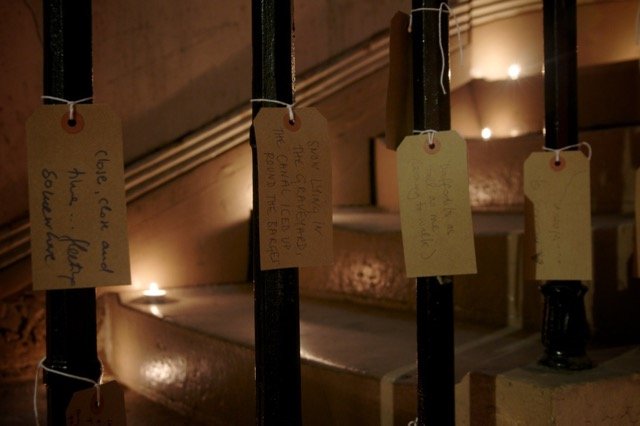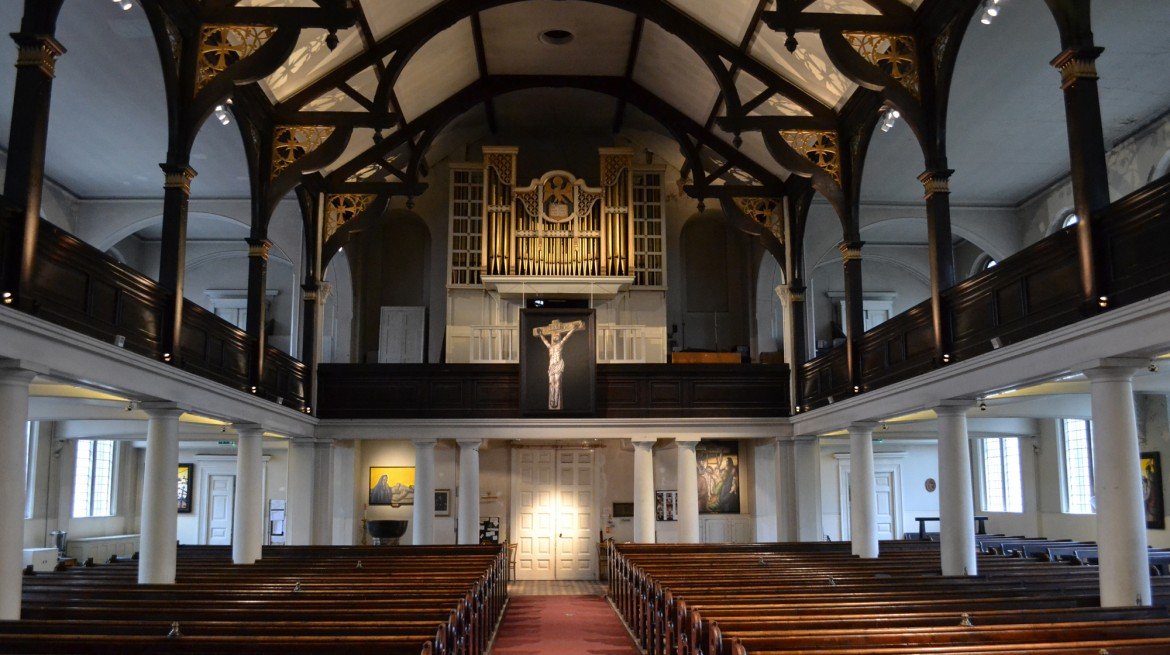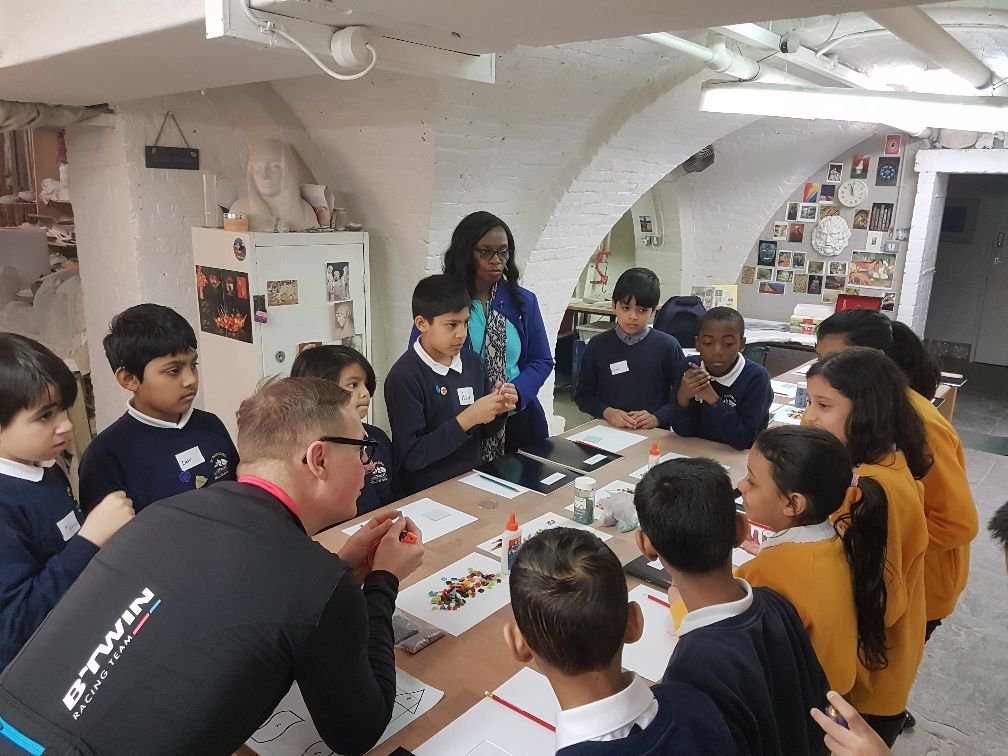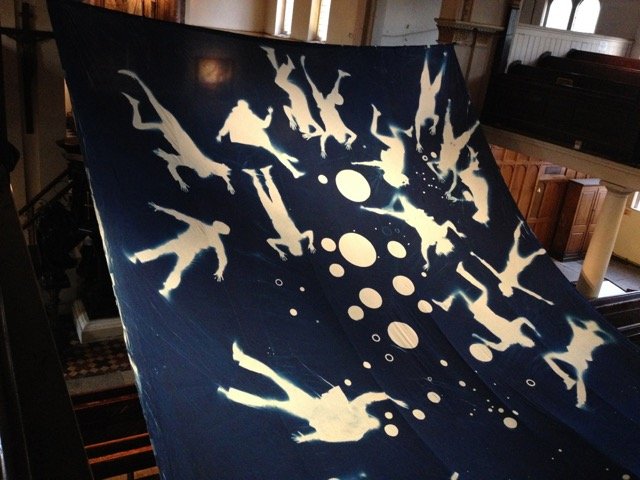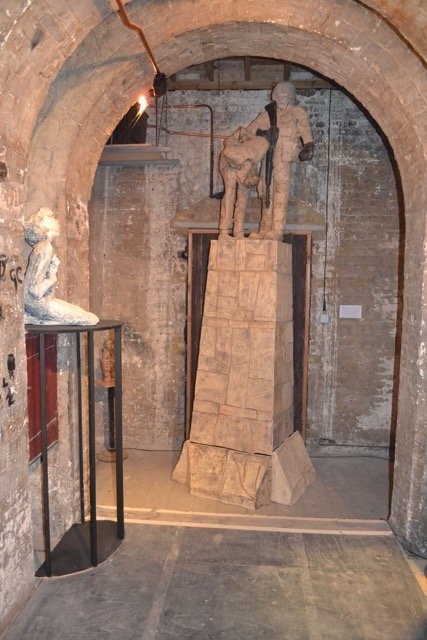St John on Bethnal Green
Short term rolling exhibitions with a community focus
St John on Bethnal Green, London, has an active arts programme operated by Rev’d Alan Green and Arts Programme Coordinator Sabine Butzlaff according to the principle of mutual respect. Those who are selected to exhibit in the church are expected to undertake all preparations themselves and are trusted with the keys to the exhibition space. Rev’d Regan O’Callaghan, an artist and priest, played an important role in the development of the current arts programme. O’Callaghan helped to foster the church as a space for artists and founded the crypt as the flourishing community arts centre that it is today.
‘It was really really fortunate [...] that we had Regan as both a priest and an artist. There was a wholeness to that because we don't want to separate them out. We ... [strive for] wholeness around art and spirituality […] at the same time we do want to respect that art in itself […] we’re not trying to push a theological model through art.’ Rev’d Alan Green
The Crypt (occupied long term by art collective Lumen), Belfry and Gallery spaces of the church are the allocated exhibition spaces. Butzlaff aims to schedule exhibitions one year in advance of opening, with each typically on display for one month. Preview evenings are timed to coincide with the Whitechapel Gallery’s First Thursdays programme, which sees East London galleries open their exhibitions on the first Thursday of each month in order to share in the visitors the event draws. Artists are able to choose their opening times for their St John’s show, with a minimum opening schedule of two, four-hour slots per week expected. Invigilation is also the artist’s responsibility – a substantial commitment with two invigilators required during opening hours.
St John’s has a community focus. Given its location in the heart of East London, that community has for some time been young and arty, though Rev’d Green notes that gentrification is beginning to change that. Butzlaff and Green involve their congregation by discussing the exhibition programme at services. The Community Art Room offers a range of courses, taught by artists and others, which engage community groups. Artists are at the heart of what St John’s does; both the Belfry and North Gallery are free to use which is extremely unusual for London spaces, allowing artists with limited means a valuable opportunity to showcase their work.
Context
Designed by Sir John Soane and constructed from 1826-1828, the original church was designed to spread Christianity amongst the working class. A fire in 1871 damaged the church and heavy restorations and extensions in the 19thCentury were undertaken by William Munday and GF Bodley.
St John’s benefits from its Belfry and upper galleries which allow artists to occupy areas without inhibiting the church’s day to day activities. The exhibition areas are not typical, white-walled gallery space, and lighting and surface evenness vary immensely between areas.
Description
‘We don't ask, we offer.’ Sabine Butzlaff
The exhibition programme philosophy at St John’s takes a hands-off approach. Spaces are detailed on the church’s website and interested artists can propose an exhibition by completing a form online. After receiving a proposal, Butzlaff invites the artist to visit the site where she explains the constraints of working in a listed church building.
‘I always insist on meeting the artist, I show them around and tell them how it works.’ Sabine Butzlaff
Those who are still interested are asked to submit a CV, examples of previous work and an outline of their proposal. The acceptance of a proposal depends on the artist’s individual capability and commitment as much as their work – artists must be judged as able to both mount and run their show independently. If their proposal is accepted, dates will be confirmed and an agreement is made that if the artist cancels within six months of the exhibition opening they will incur a fee of £150.
The fact that artists are required to install and invigilate independently is key to the way in which the programme is managed. Butzlaff does not impart curatorial influence on exhibitions. However, proposals which interact with the church’s architecture, surroundings and community are encouraged. Guaranteeing that all artwork displayed is appropriate for a church setting requires every proposal to be assessed with care. Some proposals are rejected after consideration; for example, an artwork which proposed the killing of an animal was rejected after thorough consultation with members of the congregation. As care is taken to guarantee no permanent alterations are made to the church, permission from the DAC is not sought on an exhibition by exhibition basis.
‘In terms of how it looks they just do that all themselves … we have conversations about what might work, but I would never tell them where they should put something … I say things like don't go up on high ladders, don't change the light settings.’ Sabine Butzlaff
‘We have very few rules in terms of content but we do have some … it’s not as if we have no limits but they are difficult to define until we meet them.’ Rev’d Alan Green
Artists are required to give a talk about their work to the congregation of St John on Sundays. However, this is not always enforced since some artists feel uncomfortable speaking in the main church to a full congregation.
The nature and placement of interpretive text is decided by the artist, however, each artist is required to submit text that advertises the installation to the First Thursdays organisers. This text is edited by Butzlaff, a step often necessary with artists for whom English is not their first language. Printed interpretation is popular and displayed alongside the artwork, and low lighting conditions in the Belfry make takeaway, A4 artists’ statements a sensible and effective choice. Because of lighting conditions, temporary, free-standing lights are needed to illuminate installations in the Belfry. The space’s uneven, nail-driven surfaces provide options for hanging work to the walls, and old pipes are used in a similar way. This ad-hoc system requires artists to be flexible in their installation strategy.
Appraisal
‘I think the best one we ever had was the audio installation which consisted of a small suspended light in the middle of the Belfry and the sound of ‘silence’, which was recorded in the church prior to the exhibition ... There was about twenty of us standing in the dark and nobody left before it finished. It was a quarter of an hour.’ Sabine Butzlaff
Audiences and exhibitors are quite interlinked here, as artists will bring friends to their openings, and news of exhibitions spreads by word of mouth. By timing their openings with the Whitechapel First Thursdays initiative, St John’s draws in a young and art literate audience. However, by involving their congregation with the exhibition programme, both by discussing it on an individual level and holding talks, Butzlaff and Green take care not to alienate their congregation. Bethnal Green remains a thriving area for visual arts, if different to the emergent art scene St John’s previously supported.
“It’s changing here” says Sabine, “I’m not disheartened, I think that’s the community we have now.”
The best exhibitions at St John’s interact with the building’s unique features and conditions directly. Engaging with the space and its properties creates a more powerful experience for the viewer. The least successful exhibitions, according to Butzlaff, were those led by an artist ill-equipped to take on the responsibilities implicit in organising and invigilating an exhibition without institutional support.

